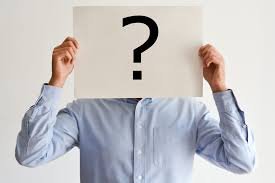Dear Ahmed Pervez,
You would be delighted to know that Karachi just experienced a treat this summer with your posthumous solo show at VM Art Gallery. The event warrants a congratulatory letter and an excuse to write to a master of Modern Art in South Asia. Way back, as seekers of knowledge, we were told that a “back to the future debate” can enable us to understand where we came from and where we’re going. Your art practically illustrates the result of such an approach. Creatives today should follow you to decode the “Eastern Modernist” values in art. Yes, there’s a tinge of sarcasm in my comment, ridiculing those who, despite claiming the modern art movement’s universal significance, only approved art produced in Europe or the United States as truly modernist.
Modernist art from a non-Western milieu was regarded in Europe and the United States as coming “from the margins” and thus scarcely worthy of consideration within the modernist canon. You were an exception, perhaps celebrated more abroad than in Pakistan and this not because of the aesthetic bias nor the professional jealousy (it is a more contemporary phenomenon in Pakistani art circles) but just because it unfolded that way.
If we ever had a chance to meet, I’d have asked you to share your experience displaying works alongside Alexander Calder. His sculptures physically manifest the energy in your compositions. The hanging pieces of metal, wire and shreds store kinetic energy. He carefully designed structures that endure wind, light and pressure, inviting viewers to engage dynamically. You painted small compositions that withheld similar potential, forcing viewers to interact in a different dimension — a metaverse where they’d visualise poetic, rhythmic movement, clutter or a whisper. In the first instance, the interplay between form and motion is “real”, and in your case, it’s “imaginary”, though equally impactful.
I hope you don’t mind me calling your surfaces small in size; it’s only in comparison to Jackson Pollock. I unintentionally compared you to Pollock due to the aggressive, uncompromising and powerfully physical interpretations you both infuse into your surfaces. He’s tagged as an Abstract Expressionist; dripping, spattering and splashing household paint, in full action and thrill using his whole-body force. The extreme form of abstraction, along with spontaneity, contradicts the internal rhythms of his large, unmounted canvases. The uniformity in this case appears slightly forced as the material density combines with structural repetitiveness. It’s where you surpass him – 1) Your works are fluid and like a whirl of a dervish, they appear free and liberated yet remain composed and calculated; 2) Your structures aren’t purely ‘abstract’ as understood in the West; they seem connected or abstracted from some ‘reality’, either initiating from or ending into it.
These attributes distinguish ‘Eastern’ from the ‘Western’ notions of abstraction in art, which is also reflected in the two different modes of modernity. Should I say what was modern (new and novel) in the West was basic and long established in the East? Allow me to make another reference to a Bauhaus painter, one whose works are often linked with musicality and metaphysicality – Paul Klee. Klee admitted his understanding of abstraction “matured” after Tunisia; colour “possessed” him, and he “no longer had to chase it” making faithfulness to nature fade in importance. In fact, from then on, Klee’s artistic path revealed a romantic affinity for abstraction.
Naming his work, after the Ummayad city founded in 670, “In the style of Kairouan” is a testament. What I aim to imply here is that for you, this colour sensibility was hereditary. What Klee, Matisse and Picasso borrowed, from their visits to Tunisia, Egypt, Morocco or exposure to African and Spanish art, was your DNA memory. I regret if I sound prejudiced in declaring that the 20th-century Modern Art movement owes itself to the age-old Eastern ideals of abstraction and its rich colour palette.
Bano
August, 2025





